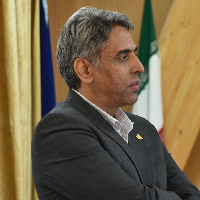Effects of a Novel Blended Virtual Reality and Clinical Learning Environment on the Learning Transfer of Anesthesiology Residents
The use of educational technology is considered a necessity due totheincreasing changes in medical education. This study aimed to design a novel blended virtual reality and clinical learning environment(CLE) and to investigate its effectiveness in the learning transfer of anesthesiology residents duringspinal anesthesia procedures.In this experimental study, 25 residents (academic year 2020/2021) were randomly divided into blended (n=11) and clinical (n=14) groups.Spinal anesthesia training for the blended group was performed in the virtual training laboratory (week 1) and the operating room (from week 2 to week 4), while for the CLEgroup, it was only performed in the operating room. Training, based on task-centered learning, was provided for both groups, and then, a 360-degree assessment of learning transfer was conducted by professors, patients, co-workers, and self-assessments using a standard questionnaire. Data were analyzed using non-parametric tests.There was a significant difference in the learning transfer of residents between the blended and CLE groups (U=39, P=0.03<0.05).There was also a significant difference in the subcategories of learning transfer according to the professors and co-workers; however, there was no significant difference according to the patients and self-assessments. The blended VR/CLE learning environment was more effective than CLE in improving residents’ learning transfer. Besides, an increase in scores indicated an improvement in professional competence.
-
Critical Review of Existing Classifications of Religious Sciences and Presentation of a Goal-Oriented Alternative: A Step towards a Civilizational Perspective
Maghsoud Amin Khandaghi *, Azam Mohamadzadeghasr, , Alireza Sadeghzadeh Ghamsari, Saeed Javad Ghandili
The Qur’an and Science, -
Designing, construction and validating a tool to measure the effectiveness of the teaching process of student teachers in the internship course for intern professors
Somaye Ghazi, *, Samad Izadi
Journal of Educational and Scholastic Studies,


